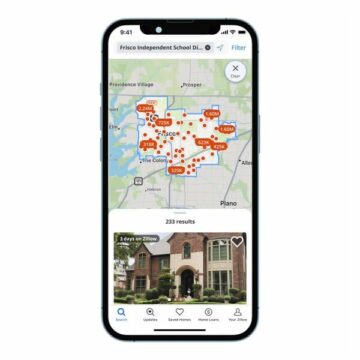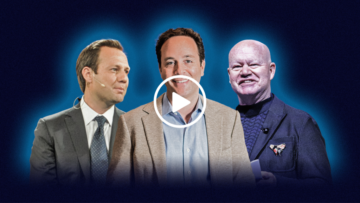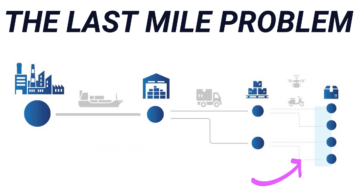
We all have worries, but what are some strategies to keep negative thoughts away and visualize good things for our businesses, especially when things are difficult? Even when things are good, we worry. How do you push past that?
Here are some ways I have used alternative and faith-based tactics to help keep worries at bay and build happiness and gratitude back into my life and business.
We all worry, so how do we feel grateful?
I have no history of living a worry-free life but God knows I wanted it. I was brought up as a Jewish child of some privilege in New York, where it seemed my family motto was, “Things are never so bad they can’t get worse.” Talking about worry seems natural.
Worrying, and its close cousin kvetching and kvelling about the things we worry about, was our job, pastime and passion. It was the air we breathed and the context that gave us life.
To imagine a life without worry was like imagining sprouting wings (and if we did, Mom would worry we’d fly too close to the sun.)
Isn’t that the dream — to live a life free of worry? That sure seemed the promise when I was a teen studying Castenada and reading Siddhartha.
I started practicing Transcendental Meditation (TM) when I was around 19, and the unspoken but overarching goal seemed be to find a life free of worry. Everything I tried — yoga, meditation, therapy, Tony Robbins, the work of Dr. Joe Dispenza, the Landmark Forum — whatever I did, whether it was a conscious call or not, it was done to banish worry from my life forever.
“Between stimulus and response, there is a space. In that space lies our freedom and our power to choose our response. In our response lies our growth and our happiness.” — Viktor Frankl
In Jewish tradition, there is a word: dayenu. This is used during the Passover seder and means “It would have been enough for us.”
We say it (sing it, actually) as we tell the story of our exodus from Egypt. We mention each step and sing dayenu.
- If we had been freed as slaves but not brought to the Red Sea — Dayenu.
- Had we been brought to the Red Sea but had it not been parted — Dayenu.
- Had it been parted but we not been allowed to cross — Dayenu.
On and on, until we are brought to the land of milk and honey. You get the idea.
I could never get this. How could it be enough? How could we say, “It’s enough” if we didn’t get to the Promised Land?
Now, the answer was clear: Each journey step is to be celebrated as complete. Each step is acknowledged and appreciated as a step toward our future. If we don’t recognize the gift of where we are, we will never appreciate the future when it comes here.
The suffering comes when we demand that the universe (or God, in this case) deliver more. We choose to be grateful for where we are, and we welcome what is next.
Using science and spirituality to bridge the gap
Dr. Joe Dispenza, a neuroscientist, author, speaker and holistic teacher, has spent years bridging the gap between science and spirituality by showing how we attract what we focus our attention on.
He calls gratitude “the ultimate point of attraction.” If you are interested in developing power and effectiveness by mastering the Law of Attraction, then this is what there is to practice.
Be clear: This space of turning our attention from worry, and the stress, anxiety, upset and overwhelm that comes with it, to one of gratitude is a practice. It takes practice, and like any practice, it’s a mountain with no top. There is no “there” to get.
I’d invite you to look at it like learning to ride a bike — you only know how to do it by doing it. We first learn balance as children when we learn to walk. Then, as we master balance, we learn to ride a bike and maybe learn to ski, skate or dance.
Eventually, the basics become second nature. Mastering any skill is a lifetime pursuit, and once you learn the basics (personally discover not falling), you have it forever. Plus, the more you practice, the more mastery you develop.
What if locating ourselves in gratitude was the game?
Rather than spending our energy on avoiding or overcoming things we worry about, what if we practiced and learned to respond to circumstances by choosing to focus on what we’re grateful for?
This goes beyond “positive thinking,” which all too often is simply putting icing on mud and calling it a cake.
In this practice, we are not pretending the things we are worried about aren’t real — the threat of market shifts or health issues with our loved ones are real. Pretending we’re not worried about that won’t help.
But giving space for them, allowing them to exist as things we “could” worry about, but choosing to focus on something else gives a certain calm, power and freedom that is remarkable.
It might be hard to believe until you’ve had the experience, but you and I watch athletes do remarkable things with their bodies all the time. We see what is possible through their practicing their craft every day.
So how can you get there? What are the actual practices?
Mindfulness meditation is amazingly simple and yet transformative. A committed, consistent practice of watching the breath for 10 minutes daily will do.
A recent article in Forbes quotes a study from Clinical Psychology Review showing a 10-minute daily practice will reduce stress, anxiety and depression while lowering blood pressure. The study also demonstrated increased immune response, improved memory and better mood regulation.
I don’t know about you, but those all look pretty good to me, and while I certainly complain about being “too busy,” 10 minutes is a small price for those benefits.
Another strategy, the Emotional Freedom Technique (EFT) may seem a bit out there, but it is simple and effective, and the results are immediate.
Medical News Today reports that EFT, or tapping, reduces anxiety and stress, improves mood, helps with weight loss and aids with chronic pain. Again, it is hard to argue with those benefits.
We practice both mindfulness and tapping with our team regularly with amazing results — they consistently acknowledge these practices as a source of their effectiveness.
Other ways to build gratitude and release worry
More traditional recommendations about exercise, spending time in nature, and making powerful social connections are also amazingly useful in this endeavor.
Remember, the point is not to eliminate the things we worry about but to control what we focus on — what we give our most prized and limited resource, our attention, to.
I can tell you from my personal experience that while I was certainly not immune from the economic impacts of the downturn in the market over the last year, my personal outlook, confidence, peace of mind and satisfaction have never been higher.
The more we practice controlling our responses, the more we get to control our future. As a bonus, our present reality gets more accessible and more fulfilling.
Aaron Hendon’s extensive experience in real estate and entrepreneurship has given him a unique perspective on how to navigate even the most unstable market conditions. Connect with Aaron on Instagram and Linkedin.
- SEO Powered Content & PR Distribution. Get Amplified Today.
- PlatoData.Network Vertical Generative Ai. Empower Yourself. Access Here.
- PlatoAiStream. Web3 Intelligence. Knowledge Amplified. Access Here.
- PlatoESG. Carbon, CleanTech, Energy, Environment, Solar, Waste Management. Access Here.
- PlatoHealth. Biotech and Clinical Trials Intelligence. Access Here.
- Source: https://www.inman.com/2024/02/27/how-to-use-mindfulness-to-build-gratitude-in-your-business-each-day/
- :has
- :is
- :not
- :where
- $UP
- 1
- 10
- 19
- 2024
- 36
- 7
- 8
- a
- Aaron
- About
- accessible
- acknowledge
- acknowledged
- actual
- actually
- again
- aids
- AIR
- All
- allowed
- Allowing
- also
- alternative
- amazing
- and
- answer
- Anxiety
- any
- appreciate
- appreciated
- ARE
- argue
- around
- arrived
- article
- AS
- At
- athletes
- attention
- attract
- attraction
- author
- auto
- avoiding
- away
- back
- Bad
- Balance
- Basics
- Bay
- BE
- become
- been
- being
- believe
- benefits
- BEST
- Better
- between
- Beyond
- Bit
- blood
- Blood Pressure
- bodies
- Bonus
- both
- Breath
- BRIDGE
- bridging
- brought
- build
- business
- businesses
- busy
- but
- by
- CAKE
- call
- calling
- Calls
- CAN
- case
- celebrated
- certain
- certainly
- charge
- child
- Children
- Choose
- choosing
- circumstances
- clear
- Close
- comes
- committed
- complete
- conditions
- confidence
- Connect
- Connections
- conscious
- consistent
- consistently
- context
- control
- controlling
- could
- craft
- Cross
- daily
- dance
- day
- deliver
- Demand
- demonstrated
- depression
- develop
- developing
- DID
- difficult
- discover
- do
- doing
- done
- Dont
- DOWNTURN
- dream
- during
- each
- Economic
- economic impacts
- Effective
- effectiveness
- Egypt
- eliminate
- else
- emotional
- endeavor
- energy
- enough
- entrepreneurship
- especially
- estate
- Even
- Event
- Every
- every day
- Exercise
- exist
- Exodus
- experience
- extensive
- Extensive Experience
- Falling
- family
- feel
- Find
- First
- Focus
- For
- Forbes
- forever
- Forum
- Free
- Freedom
- from
- fulfilling
- future
- game
- gap
- gave
- get
- gets
- gift
- Give
- given
- gives
- Giving
- goal
- God
- Goes
- good
- grateful
- gratitude
- Growth
- had
- Hard
- Have
- Health
- help
- helps
- here
- higher
- him
- history
- holistic
- Honey
- How
- How To
- HTTPS
- i
- idea
- if
- imagine
- immediate
- immune
- Impacts
- important
- improved
- improves
- in
- increased
- industry’s
- interested
- into
- invite
- issues
- IT
- ITS
- jewish
- Job
- joe
- join
- journey
- jpg
- July
- Keep
- Know
- knows
- Land
- landmark
- LAS
- Las Vegas
- Last
- Last Year
- LEARN
- learned
- learning
- lies
- Life
- lifetime
- like
- live
- living
- locating
- Look
- loss
- loved
- lowering
- Making
- Market
- market conditions
- master
- Mastering
- May..
- maybe
- me
- means
- Meditation
- Memory
- mention
- might
- Milk
- mind
- Mindfulness
- minutes
- mom
- moment
- mood
- more
- most
- Motto
- Mountain
- my
- Natural
- Nature
- Navigate
- negative
- never
- New
- New York
- news
- next
- no
- of
- often
- on
- once
- ONE
- ones
- only
- or
- our
- ourselves
- out
- Outlook
- over
- overarching
- overcoming
- Pain
- passion
- Passover
- past
- peace
- peers
- personal
- Personally
- perspective
- plato
- Plato Data Intelligence
- PlatoData
- plus
- Point
- possible
- power
- powerful
- practice
- practices
- present
- pressure
- pretty
- price
- privilege
- prized
- promise
- promised
- Psychology
- pursuit
- Push
- Putting
- quotes
- Reading
- real
- real estate
- Reality
- recent
- recognize
- Red
- reduce
- reduces
- regularly
- Regulation
- release
- remarkable
- Reports
- Respond
- response
- responses
- Results
- Ride
- satisfaction
- say
- Science
- SEA
- Second
- see
- seem
- seemed
- seems
- Shape
- showing
- Simple
- simply
- Skate
- skill
- small
- So
- Social
- some
- something
- Source
- Space
- Speaker
- Spending
- spent
- started
- Step
- stimulus
- Story
- Strategy
- stress
- Study
- Studying
- suffering
- summer
- Sun
- sure
- tactics
- Take
- takes
- talking
- tapping
- teacher
- team
- technique
- teen
- tell
- than
- that
- The
- The Basics
- The Future
- their
- Them
- then
- therapy
- There.
- These
- they
- things
- Thinking
- this
- those
- threat
- Through
- time
- TM
- to
- together
- too
- top
- toward
- tradition
- traditional
- tried
- Turning
- ultimate
- unique
- Universe
- until
- us
- use
- used
- useful
- VEGAS
- visualize
- walk
- wanted
- was
- Watch
- watching
- ways
- we
- weight
- welcome
- What
- What is
- whatever
- when
- whether
- which
- while
- will
- wings
- with
- without
- Word
- Work
- worried
- worry
- worse
- would
- year
- years
- yet
- Yoga
- york
- you
- Your
- zephyrnet












